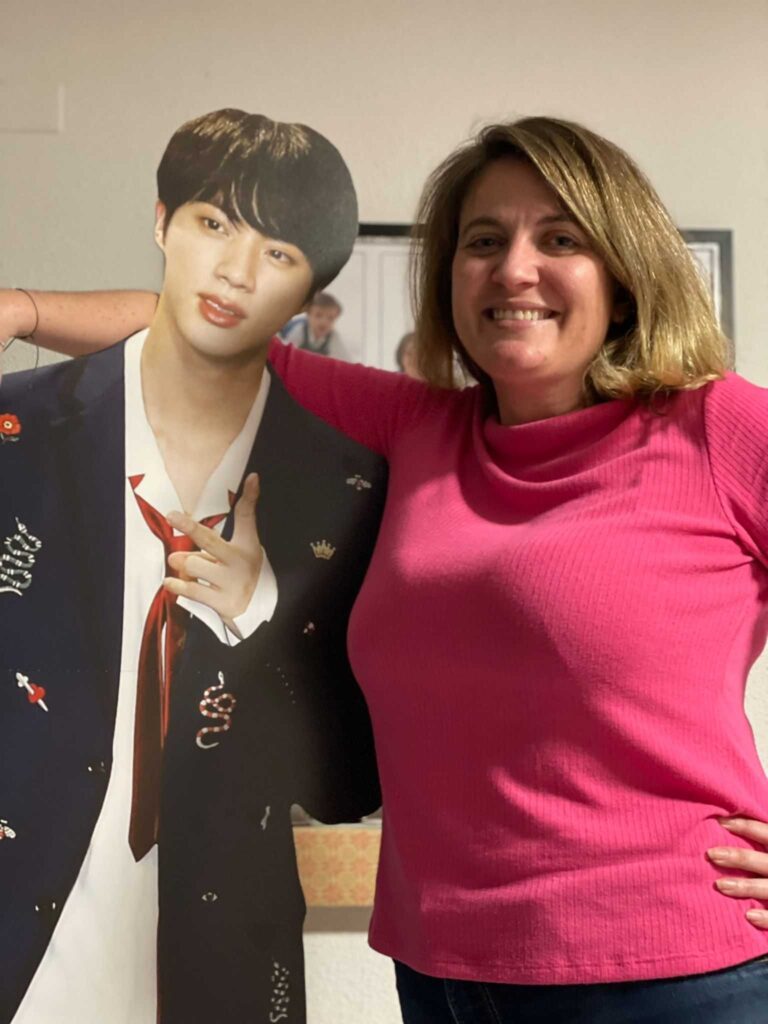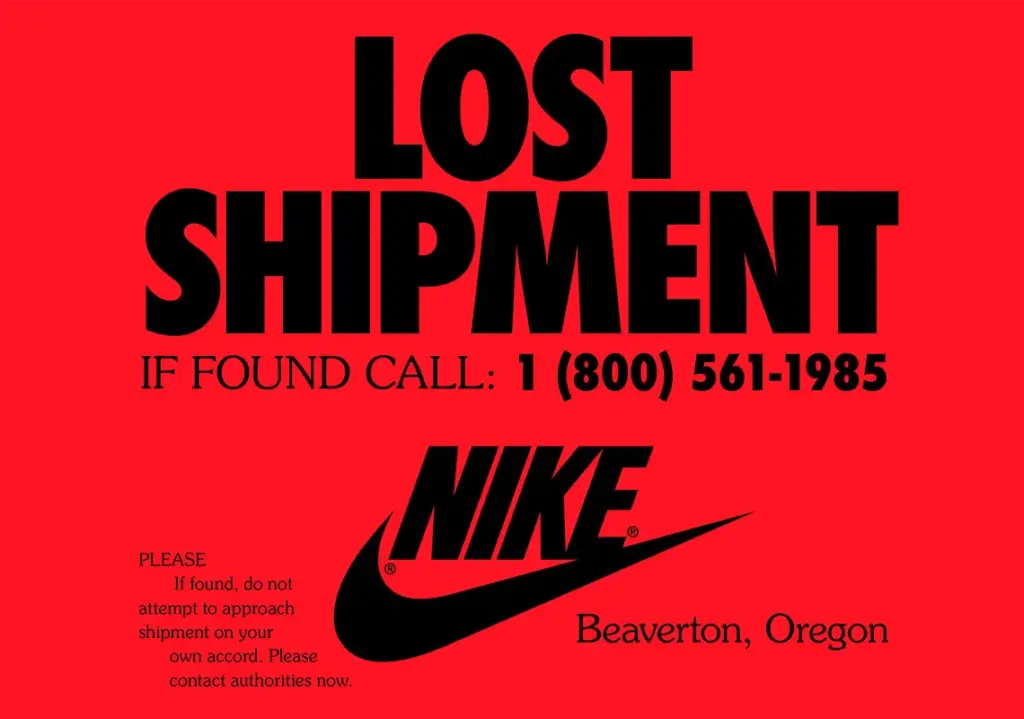A couple of weeks ago a few of us were on a call that wrapped a little early. We stayed and chatted.
Paula Mestre, our UX lead and resident K-pop expert, had something important to share: BTS, the massively, globally famous K-pop band was doing a WHOLE THING. And it was driving Paula and the rest of the rabidly devoted BTS Army crazy — in the best of ways.
“The excitement and joy that this website has brought to me is unmeasurable,” she said.
Here’s the gist of the BTS mystery: On April 14, BTS posted a mysterious message on X asking the fandom if they had forgotten something and linking them to an even more mysterious website for a logistics company called Monochrome, which prompted users to track a shipment. What, exactly, was in that shipment? Was it teasing a new album? A new tour? Details were scant. But clues, for those who knew to look for them, abounded.
BTS loyalists, known as Army, used all their detective skills to search for the password, referencing the invoice number, time and date stamps, and various other Easter eggs to unravel the mystery or even decode when when the next update on this unrequested (but very much wanted) parcel would be revealed.
“As I was telling you all this, millions of fans were trying to find out what this parcel is about and in the meantime they were sharing their own theories, following Twitter accounts that look suspicious, attending listening parties and most probably saving their money to buy whatever has created such commotion,” Paula explains.

BTS is hardly the first band or brand to launch a viral marketing campaign rooted in mystery and designed to make people hunt for Easter eggs, follow clues, pull threads, and to wonder — and talk to others about — about what the heck was going on. After all, building suspense is a great storytelling technique, and when a brand has loyal followers it can use this type of gamesmanship to further strengthen those bonds.
So we asked ourselves, what are some other examples from the recent past of mysterious marketing campaigns? Here are a few that we recalled:
Snoop Dogg ‘Gives Up Smoke’
Late last year, Snoop Dogg’s mysterious Solo Stove’s campaign garnered attention by highlighting his commitment to quit smoking. Could the infamous weed smoker really be giving up smoke? Some were skeptical, others supportive.

Was Snoop Dogg giving up smoke? Or just warming up a viral marketing campaign?
Ultimately, no, Snoop was not giving up smoking — the perpetual pitchman was teasing a partnership with Solo Stove to promote a smokeless outdoor fire pit. It did not go well: The campaign flopped and Solo Stove replaced its CEO. But, for better or worse, the campaign appeared to boost brand awareness, driving millions of likes on social media — not to mention that it sparked online conversations around public health and personal transformation, and numerous marketing think pieces.
Nike’s ‘Lost Shipment’

In 2019, Nike launched the ‘1985 Lost Shipment’ marketing campaign that blended mystery with retro aesthetics, generating buzz and engagement across social platforms. The campaign included limited edition drops and interactive elements, encouraging consumer participation and driving hype around the brand. The campaign turned out to be a collaboration to hype the third season of “Stranger Things,” which was set in 1985, and effectively capitalized on the appeal of retro culture while maintaining relevance and excitement among its audience.
J.K. Rowling’s Easter Eggy Website
This one was a personal favorite of EK Account Manager Madeleine Schneider: In May 2004, J.K. Rowling surprised every Potterhead (at that point eagerly awaiting the release of book six in the series) with a new website. The site was built on Flash and the epitome of early-2000s web design, the site was an interactive, digital version of Rowling’s desk and home, filled with clickable clutter and containing a multitude of Easter eggs and hidden secrets. Most excitingly, it was used as a vehicle for announcements of titles, publication dates and more.
But those announcements weren’t simply posted to the site. Instead, they were hidden behind complicated puzzles that typically involved cracking codes, answering trivia, and clicking exactly the right thing in exactly the right order. As soon as readers knew an announcement was coming, they’d race to the site to try their luck — or, if they had a little less time on their hands for random clicking, wait impatiently for someone on a fan site to release the answers. The site was a much-needed reprieve from the long waits between book releases, and succeeded in catalyzing conversation and bringing together an online community in a pre-Twitter, early-days-of-Facebook world.
And Pretty Much Everything Taylor Swift Does
Oh, and apparently a certain (checks notes) Taylor Swift has a thing for building mystery among her followers, too. She has used Easter eggs throughout her career — it’s one of the defining binding elements between her and her massive body of rabidly loyal followers.
Naturally, her latest album, “The Tortured Poets Department,” included some elements of surprise, too; the number 2 was used over and over again in the runup to the release; the new album dropped at midnight on April 19; then, two hours later, at 2 a.m. EST, an unexpected second half of what was now a double album — and Swifties everywhere rejoiced.
She explained why she loves to use secret codes and hidden symbols in a 2022 interview with The Washington Post:
“It’s really about turning new music into an event for my fans and trying to entertain them in playful, mischievous, clever ways,” she said.
Back to Monochrome…
Meanwhile, Paula is waiting. And code-cracking. And watching videos, interpreting maps of Seoul, aligning listed shipment codes with BTS band-member birthdays, and is in close contact with the rest of the BTS Army as they scour the digital world for other clues.
All in an effort to find out:

Or maybe (probably?) there is no box. What will ‘Monochrome’ turn out to be? An album drop? A concert event? The reveal of a long-hidden BTS secret?
Since that first conversation, Monochrome pop-ups have opened and closed around the world; a new album release from the band’s leader, RM, has been announced, but it isn’t called Monochrome and appears to be unrelated to the ongoing mystery campaign. The biggest light on the horizon is an apparent ‘big thing coming’ on the 12th of June.
Time will tell; a month from now, the mystery will (probably) have been revealed — and the loyalty between BTS and its Army will have grown ever stronger.



